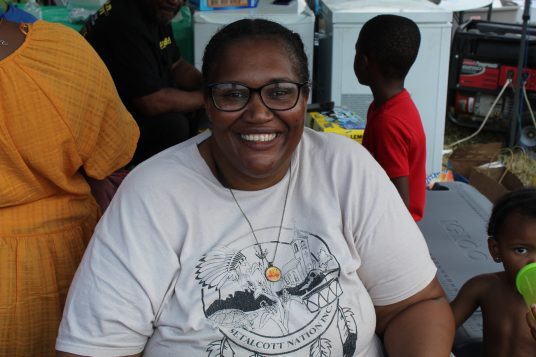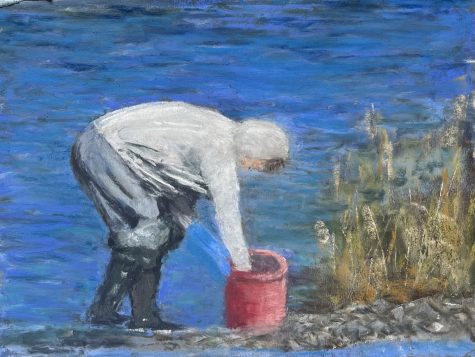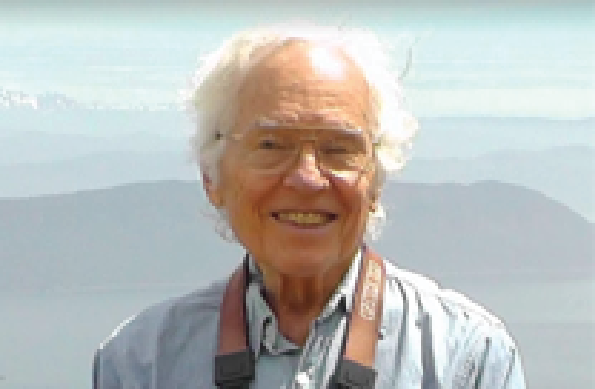By Daniel Dunaief
One person’s old discarded glass bottle is another person’s artwork, raw material for a necklace, or artifact with a compelling historical back story.
After a well-attended debut last year, the Whaling Museum in Cold Spring Harbor is hosting its second annual Sea Glass festival on July 23rd from 10 a.m. to 5 p.m. The event, which attracted over 600 people in 2022, will run two hours longer than last year and will include hourly flameworking demonstrations on the lawn of the museum’s Wright House.
Last year, “we thought we’d get 30 weirdos like me who maybe like beach trash,” said Nomi Dayan, Executive Director of The Whaling Museum. “We had this huge outpouring of interest. We weren’t expecting this many people, which was the most we’ve ever had [at an event].”
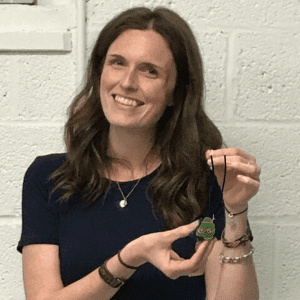
Dayan is hoping to accommodate and appeal to even more visitors at the family-friendly event with the additional two hours, numerous local exhibitors, and sea glass competitions for best in show, most unusual and best historical piece.
General admission for the festival is $15 in advance and $20 at the door. Attendees can also register in advance for a Sea Glass and Wire Wrapping Workshop, which costs $25 in advance and, if there’s room, $30 at the door. Participants 12 and over will learn how to secure sea glass and design their own necklace. Materials, including sea glass, copper and silver wire and leather lanyard, are included.
Brenna McCormick-Thompson, Curator of Education at the museum, will help lead the workshop. People will “leave will new skills and completed pieces of jewelry,” McCormick-Thompson said. “It’s nice when you have an audience that’s just as excited to learn new things as you are.”
Gina Van Bell, Assistant Director at the Museum, suggested the festival was a “family event” and said she hoped adults brought their children to learn about the history of sea glass. The museum is featuring presentations, a glass-themed scavenger hunt and crafts throughout the day which are included with admission.
Sea glass color and aging

Mary McCarthy, Executive Director of the Beachcombing Center who has been beach combing for 20 years, will help people identify sea glass by color during talks at noon and 2 p.m. People can “date glass based on a certain shade” of blue, for example, said McCarthy, who is based in Maryland and has over 30,000 Instagram followers interested in her insights, pictures and finds.
In a photo she shared of colored glass, McCarthy said the oldest color is a dark, olive green that is nearly black, which is referred to as “black glass” and is nicknamed “pirate glass.” Those finds were produced before or near the turn of the 18th century.
Combing beaches and finding unexpected artifacts left from earlier generations offers its own rewards. “People find mental health or inner peace in the search,” McCarthy said. “Searching a coastline is a sacred process. People can find things that are meaningful to them personally, but also historically.”
She has seen pieces of glass made in occupied Japan, from the Prohibition era, and from other time periods. On a recent kayaking trip to a coastal landfill near a major city on the east coast, she found an Abraham Lincoln paperweight. For McCarthy, the discovery is among her top five favorite finds.
When she’s not presenting, McCarthy, who will serve as a judge on the Sea Glass of the Year contest, will also help people identify their own sea glass discoveries.
She isn’t surprised by the enthusiastic response to the Whaling Museum’s festival. “I’ve attended festivals with over 10,000 people, where people wait in line for an hour to have sea glass identified,” she said.
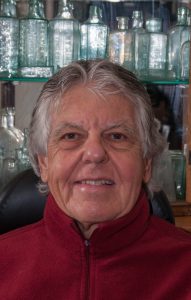
Meanwhile, at 11 a.m. and 1 p.m., George William Fisher, author and local expert on antique bottles, will present the Origins of Sea Glass: Beverage Bottles and Medicine Bottles, including milk and condiment bottles.
This year, Fisher will focus on beverages through the ages, going back to the early 1840s. He will explore the evolution of design, including a look at bottles from the 1920’s.
One of his favorite bottles is an Emerson Bromo-Seltzer bottle, which counteracted the effect of digestive problems caused by a lack of refrigeration.
Attendees at his talks can handle objects, although guests can look at some of the more expensive findings without touching them.
While wending their way around local sea glass vendors, visitors can explore the museum and can listen to a live musical performance by The Royal Yard, as Stuart Markus and Robin Grenstine showcase sea shanties by the sea shore.
The Big Black Food Truck will also serve food in front of the museum. Last year, the truck offered a peanut butter and chicken sandwich, which Van Bell described as “surprisingly delicious.”
Visitors can also partake in candy made to look like sea glass.
Festival origins
The sea glass festival started when Dayan surveyed some of the 6,000 items in the museum’s collection. Some of her favorites include 19th century glass bottles. The museum had hosted glass workshops at the end of December.
Even though sea glass doesn’t have a link to whaling, Dayan was pleased to see the historic connection visitors made to their findings and to the glass that the ocean reshapes and polishes. The museum is “about illuminating a rich connection to the ocean that surrounds us,” she said. Sea glass provides an “artistic way to do that.”
The Whaling Museum is located at 301 Main Street in Cold Spring Harbor. To purchase tickets to the Sea Glass Festival or to reserve a spot for the workshop, visit www.cshwhalingmuseum.org. For more information, call 631-367-3418.




 Welcome to the 19th edition of Paw Prints, a monthly column for animal lovers dedicated to helping shelter pets find their furever home!
Welcome to the 19th edition of Paw Prints, a monthly column for animal lovers dedicated to helping shelter pets find their furever home!









